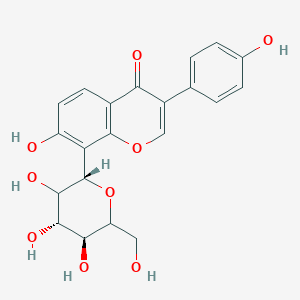| MeSH term | MeSH ID | Detail |
|---|---|---|
| Hemolysis | D006461 | 131 associated lipids |
| Diabetes Mellitus | D003920 | 90 associated lipids |
| Lead Poisoning | D007855 | 4 associated lipids |
| Adenocarcinoma | D000230 | 166 associated lipids |
| Burns | D002056 | 34 associated lipids |
| Inflammation | D007249 | 119 associated lipids |
| Reperfusion Injury | D015427 | 65 associated lipids |
| Diabetes Mellitus, Type 2 | D003924 | 87 associated lipids |
| Diabetic Nephropathies | D003928 | 39 associated lipids |
| Fatty Liver | D005234 | 48 associated lipids |
| Cataract | D002386 | 34 associated lipids |
| Diabetes Mellitus, Experimental | D003921 | 85 associated lipids |
| Body Weight | D001835 | 333 associated lipids |
| Arthritis | D001168 | 41 associated lipids |
| Heart Failure | D006333 | 36 associated lipids |
| Coronary Disease | D003327 | 70 associated lipids |
| Cell Transformation, Neoplastic | D002471 | 126 associated lipids |
| Chemical and Drug Induced Liver Injury | D056486 | 39 associated lipids |
| Hypercholesterolemia | D006937 | 91 associated lipids |
| Endometriosis | D004715 | 29 associated lipids |
SCHEMBL105486
Kakonein is a lipid of Polyketides (PK) class. Kakonein is associated with abnormalities such as Fatty Liver, Chronic liver disease, Morphologically altered structure, Hypertensive disease and Cardiovascular Diseases. The involved functions are known as protein expression, Extravasation, Liver damage, mRNA Expression and cell activation. Kakonein often locates in Body tissue, Hepatic, Microvilli, Cytoplasm and Membrane. The associated genes with Kakonein are TJP1 gene, CD14 gene, iberiotoxin, AT-Rich Interactive Domain-Containing Protein 1A and NKS1 gene. The related lipids are dehydrosoyasaponin I and Steroids. The related experimental models are Knock-out.
Cross Reference
Introduction
To understand associated biological information of SCHEMBL105486, we collected biological information of abnormalities, associated pathways, cellular/molecular locations, biological functions, related genes/proteins, lipids and common seen animal/experimental models with organized paragraphs from literatures.
What diseases are associated with SCHEMBL105486?
SCHEMBL105486 is suspected in Chronic liver disease, Hypertensive disease, Cardiovascular Diseases, Myocardial Infarction, Cerebrovascular accident, Fatty Liver and other diseases in descending order of the highest number of associated sentences.
Related references are mostly published in these journals:
| Disease | Cross reference | Weighted score | Related literature |
|---|
Possible diseases from mapped MeSH terms on references
We collected disease MeSH terms mapped to the references associated with SCHEMBL105486
PubChem Associated disorders and diseases
What pathways are associated with SCHEMBL105486
There are no associated biomedical information in the current reference collection.
PubChem Biomolecular Interactions and Pathways
Link to PubChem Biomolecular Interactions and PathwaysWhat cellular locations are associated with SCHEMBL105486?
Visualization in cellular structure
Associated locations are in red color. Not associated locations are in black.
Related references are published most in these journals:
| Location | Cross reference | Weighted score | Related literatures |
|---|
What functions are associated with SCHEMBL105486?
Related references are published most in these journals:
| Function | Cross reference | Weighted score | Related literatures |
|---|
What lipids are associated with SCHEMBL105486?
Related references are published most in these journals:
| Lipid concept | Cross reference | Weighted score | Related literatures |
|---|
What genes are associated with SCHEMBL105486?
Related references are published most in these journals:
| Gene | Cross reference | Weighted score | Related literatures |
|---|
What common seen animal models are associated with SCHEMBL105486?
Knock-out
Knock-out are used in the study 'MATE2 mediates vacuolar sequestration of flavonoid glycosides and glycoside malonates in Medicago truncatula.' (Zhao J et al., 2011).
Related references are published most in these journals:
| Model | Cross reference | Weighted score | Related literatures |
|---|
NCBI Entrez Crosslinks
All references with SCHEMBL105486
Download all related citations| Authors | Title | Published | Journal | PubMed Link |
|---|---|---|---|---|
| Wang C et al. | Protective effects of puerarin on acute lung and cerebrum injury induced by hypobaric hypoxia via the regulation of aquaporin (AQP) via NF-κB signaling pathway. | 2016 | Int. Immunopharmacol. | pmid:27643664 |
| Zhao L et al. | Protective Effects of Genistein and Puerarin against Chronic Alcohol-Induced Liver Injury in Mice via Antioxidant, Anti-inflammatory, and Anti-apoptotic Mechanisms. | 2016 | J. Agric. Food Chem. | pmid:27609057 |
| Qin H et al. | Puerarin Suppresses Na+-K+-ATPase-Mediated Systemic Inflammation and CD36 Expression, and Alleviates Cardiac Lipotoxicity In Vitro and In Vivo. | 2016 | J. Cardiovasc. Pharmacol. | pmid:27606935 |
| Lv B et al. | Puerarin Attenuates N-Methyl-D-aspartic Acid-induced Apoptosis and Retinal Ganglion Cell Damage Through the JNK/p38 MAPK Pathway. | 2016 | J. Glaucoma | pmid:27552519 |
| Su HF et al. | Absorptive interactions of concurrent oral administration of (+)-catechin and puerarin in rats and the underlying mechanisms. | 2016 | Acta Pharmacol. Sin. | pmid:26972494 |
| Xu X et al. | Puerarin reduces apoptosis in rat hippocampal neurons culturea in high glucose medium by modulating the p38 mitogen activated protein kinase and c-Jun N-terminal kinase signaling pathways. | 2016 | J Tradit Chin Med | pmid:26946623 |
| Li W et al. | Puerarin Improves Diabetic Aorta Injury by Inhibiting NADPH Oxidase-Derived Oxidative Stress in STZ-Induced Diabetic Rats. | 2016 | J Diabetes Res | pmid:26881260 |
| Chang BY et al. | Protective activity of kudzu (Pueraria thunbergiana) vine on chemically-induced hepatotoxicity: in vitro and in vivo studies. | 2016 | BMC Complement Altern Med | pmid:26825303 |
| Yang L et al. | Puerarin Protects Pancreatic β-Cells in Obese Diabetic Mice via Activation of GLP-1R Signaling. | 2016 | Mol. Endocrinol. | pmid:26789107 |
| Zhu X et al. | Puerarin Protects Human Neuroblastoma SH-SY5Y Cells against Glutamate-Induced Oxidative Stress and Mitochondrial Dysfunction. | 2016 | J. Biochem. Mol. Toxicol. | pmid:26277993 |
